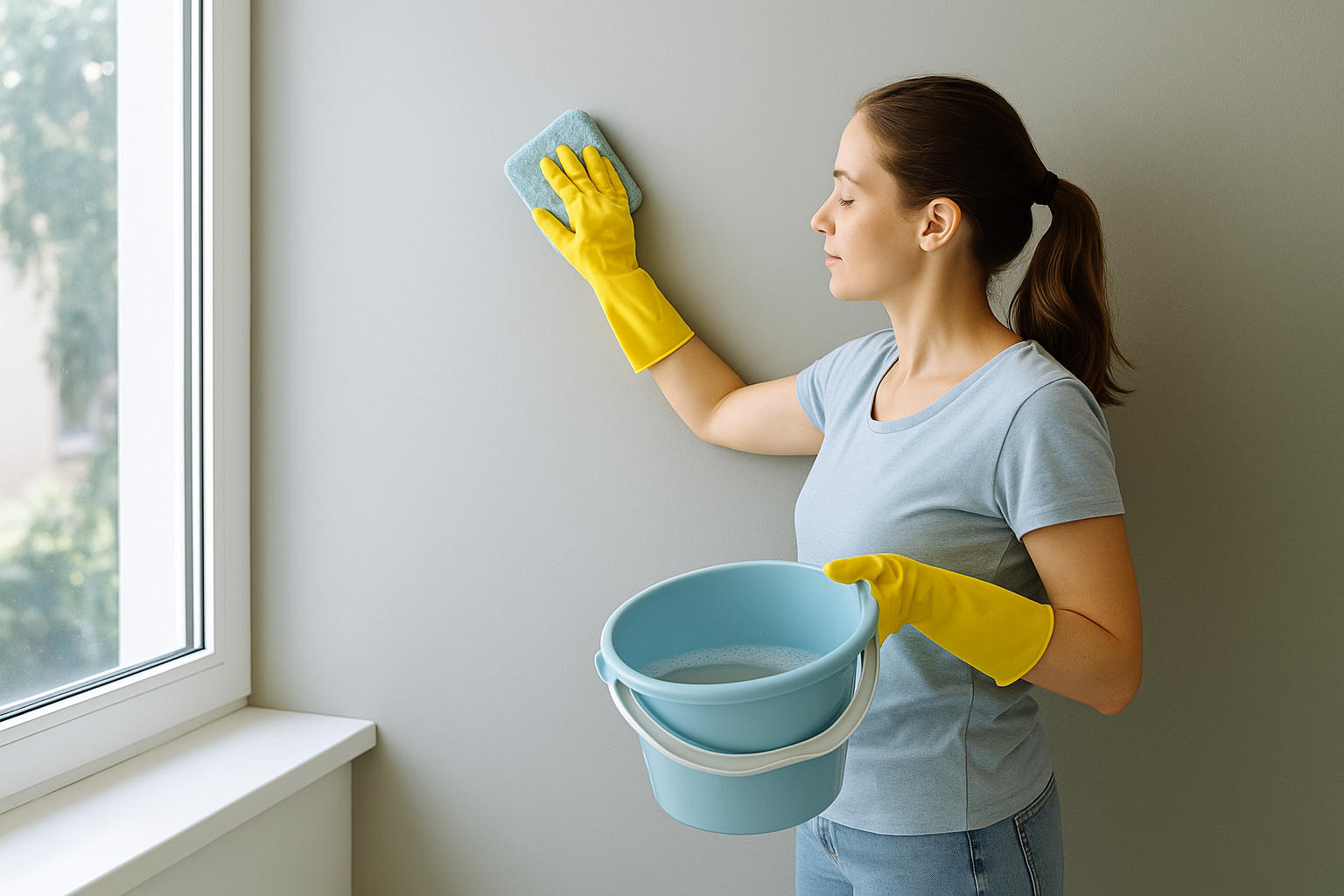Keeping your walls clean not only refreshes your home’s appearance but also extends the life of your paint job. However, cleaning them the wrong way can dull the finish or even remove the paint. At Randall’s, we’ve gathered expert advice on how to clean your painted walls effectively—without damaging the surface.
1. Can all painted walls be cleaned the same way?
No. The type of paint finish determines how you should clean your walls:
-
Flat or matte finishes: These are delicate and can easily scuff, so avoid scrubbing. Use a soft sponge with mild soap and water.
-
Eggshell and satin finishes: More durable than flat paints, they can handle gentle wiping.
- Semi-gloss and gloss finishes: The most washable options—ideal for kitchens, bathrooms, and hallways.
If you’re unsure about your wall finish, check your paint details or consult Randall’s servicesfor guidance.
2. What supplies should I use to clean painted walls safely?
You don’t need harsh chemicals. The following gentle tools work best:
- Soft microfiber cloths or non-abrasive sponges
- A bucket of warm water with mild dish soap
- Optional: a vinegar and water mix for greasy areas
- A dry towel for finishing touches
Avoid scouring pads or strong degreasers—they can remove paint or leave dull spots.
3. How do I clean stains or fingerprints on walls?
-
Dust the surface using a dry microfiber cloth.
- Dip your sponge in a mild soap solution, wring it out well, and gently wipe the stained area.
- Rinse the sponge and go over the spot again with clean water.
- Dry the area with a soft towel to prevent streaking.
For stubborn marks, try a baking soda paste (baking soda + water), but test it on a small area first.
4. Can I use vinegar or other natural cleaners?
Yes—but carefully. A mix of one cup of white vinegar per gallon of water works well for most latex-painted walls.
However, do not use vinegar on oil-based or specialty finishes as it may dull the sheen.
5. What’s the best way to clean high-traffic areas?
Entryways, stairwells, and kitchens often need extra attention.
- Wipe these areas monthly using a damp sponge and mild cleaner.
- For grease or cooking residue, use a small amount of dish soap and rinse thoroughly.
Regular gentle cleaning prevents buildup that can damage the paint over time.
6. How can I prevent streaks when cleaning walls?
- Always start from the bottom and work up to avoid drips.
- Use small circular motions rather than harsh scrubbing.
- Dry as you go with a clean towel to prevent watermarks.
7. Should I repaint if walls look dull after cleaning?
If the walls still appear faded or patchy after cleaning, it may be time for a touch-up or fresh coat.
Randall’s offers color matching and repainting advice—explore our collectionsor schedule help through our services
8. How often should I clean my walls?
-
Once or twice a year for general maintenance
-
Every 3–4 months in kitchens or high-use rooms
- Immediately after spills, scuffs, or fingerprints appear
Regular maintenance ensures your paint lasts longer and continues to look vibrant.
9. Can I clean walls freshly painted within the last few weeks?
Avoid washing freshly painted walls for at least 2–3 weeks to allow the paint to cure completely. Light dusting is fine, but moisture can ruin new finishes.
10. What if cleaning doesn’t restore the finish?
If your paint shows wear even after gentle cleaning, it may be time for a touch-up or repaint. Randall’s professionals can guide you in choosing the right paint and tools—visit our painter order formor contact usfor expert help.
Cleaning painted walls doesn’t have to be complicated. With the right approach and gentle materials, you can maintain a spotless, streak-free finish for years.
At Randall’s, we’re here to help you protect your paint investment. Whether you need cleaning advice, touch-up products, or a full repaint, our servicesand collectionsprovide everything you need for lasting results.
